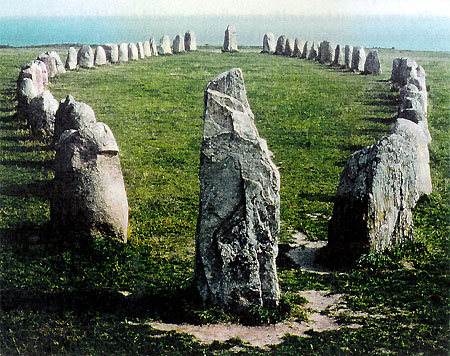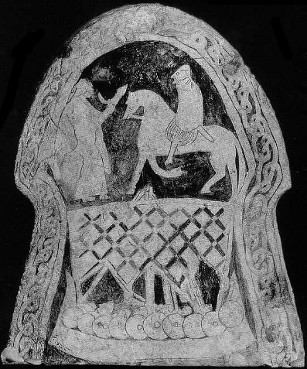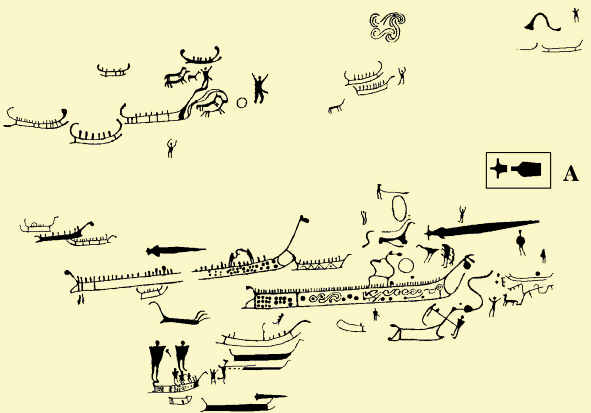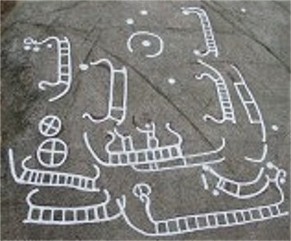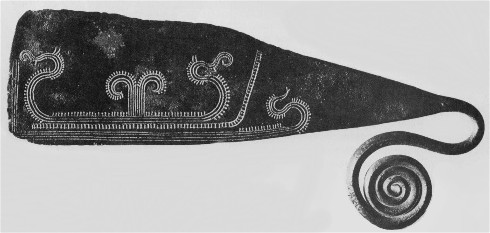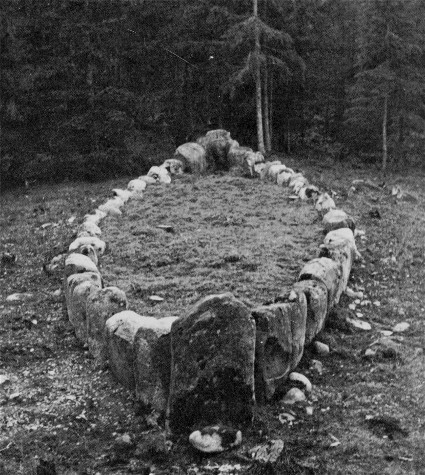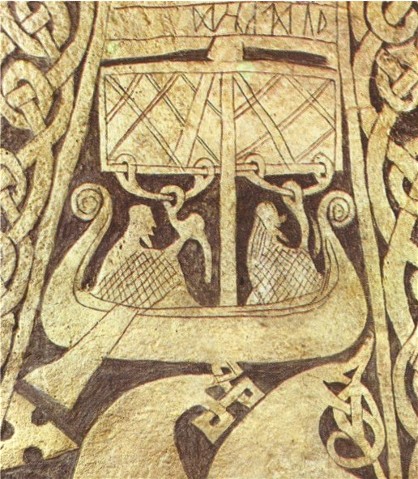The ship is commonly seen in rock carvings as far back as 5000 BCE. It is later seen on funeral stones, in graves, and is held to be one of the vehicles to reach the afterlife. The ship is also a symbol of fertility and is associated with the Vanic deities, particularly Njord, god of commerce, and Nerthus who’s image was carried around in a ship. To the Teutonic peoples, the ship was not just a means of transport, but played an overwhelming part of their spiritual and cultural development. Its’ use in fertility and funeral rites Bringing the fruitful blessings of life to the realm of mankind and return to their heavenly halls bearing with them the souls of the Noble Dead. The symbolic use of the Ship as the means of otherworldly travel is defined by its association with life, death, rebirth, and fertility.
Pages
- Home
- Why Asatru?
- What is Asatru?
- Gods & Goddesses
- Odin
- Frigga
- Thor
- Tyr
- Loki
- Baldr
- Bragi
- Heimdall
- Idunna
- Forseti
- Kvasir
- Sigyn
- Mimir
- Fulla
- Gefjon
- Nanna
- Hod
- Saga
- Zisa
- Var
- Vidar
- Freyja
- Freyr
- Nerthus
- Sif
- Hoenir
- Odr
- Lytir
- Njord
- Skadi
- Gerda
- Aegir
- Ask and Embla
- Bor
- Bolthorn
- Bestla
- Buri
- Eir
- Hella
- Hermod
- Holda
- Jarnsaxa
- Jord
- Lodurr
- Lofn
- Magni
- Mani
- Modi
- Mundilfari
- The Norns
- Ran
- Sjofn
- Skirnir
- Snotra
- Sunna
- Surtur
- Syn
- Thjalfi
- Thrud
- Uller
- Vili, Vali, Ve
- Vor
- Wayland
- Waluberg
- Ymir
- Audhumla
- Disir
- Alfar
- Draugr
- Einherjar
- Fenrir
- Huldrufolk
- Jormungandr
- Jotuns
- Landsveattir
- Nykr
- Puki
- Ratatosk
- Risir
- Valkyries
- Cosmology
- Sacred Calendar
- Virtues
- Ancestry
- Sacred Symbols
- The Germanic Peoples
- Asatru Art
- Opposers to Asatru
- Suggested Reading List
- Contact Us
- Links
